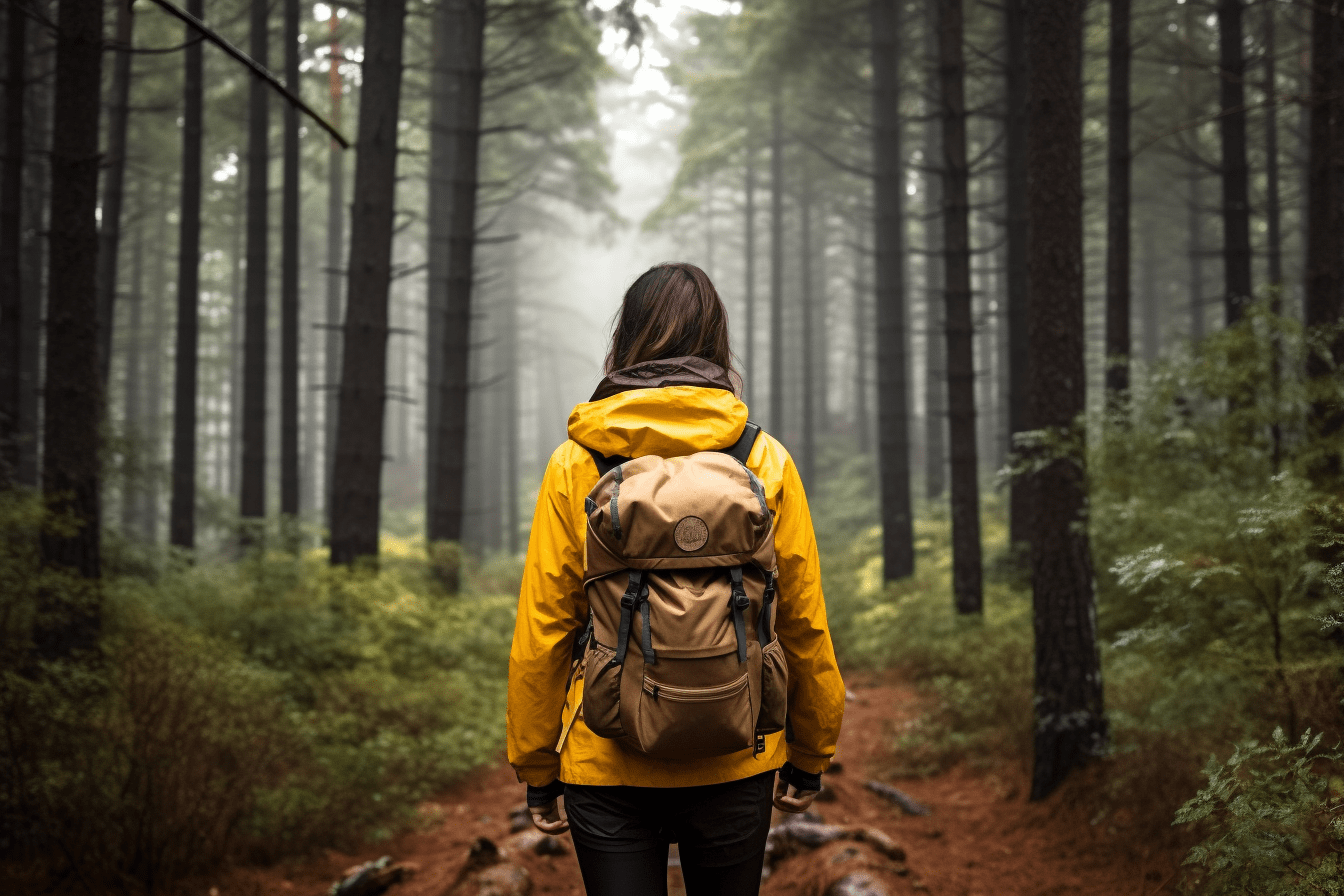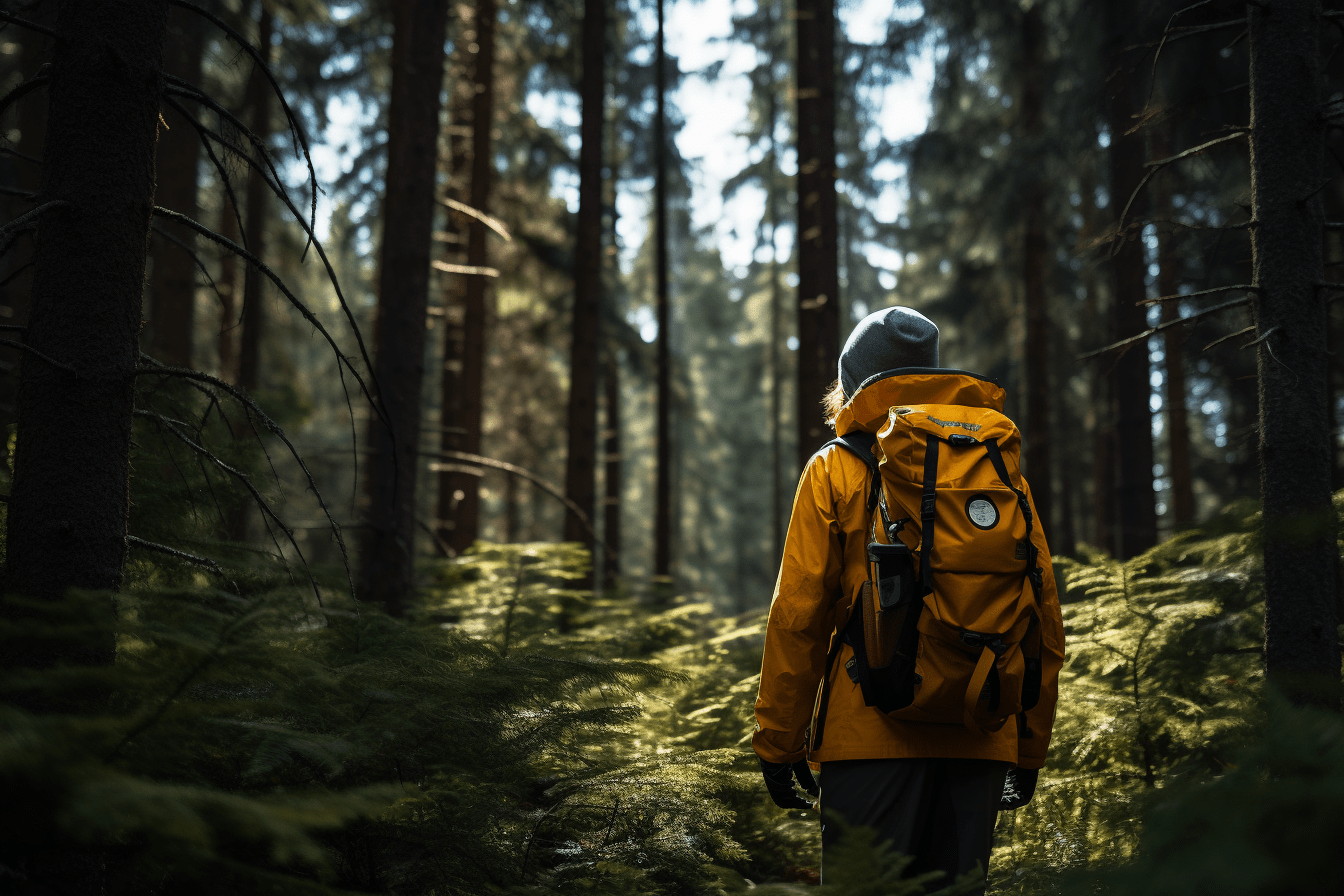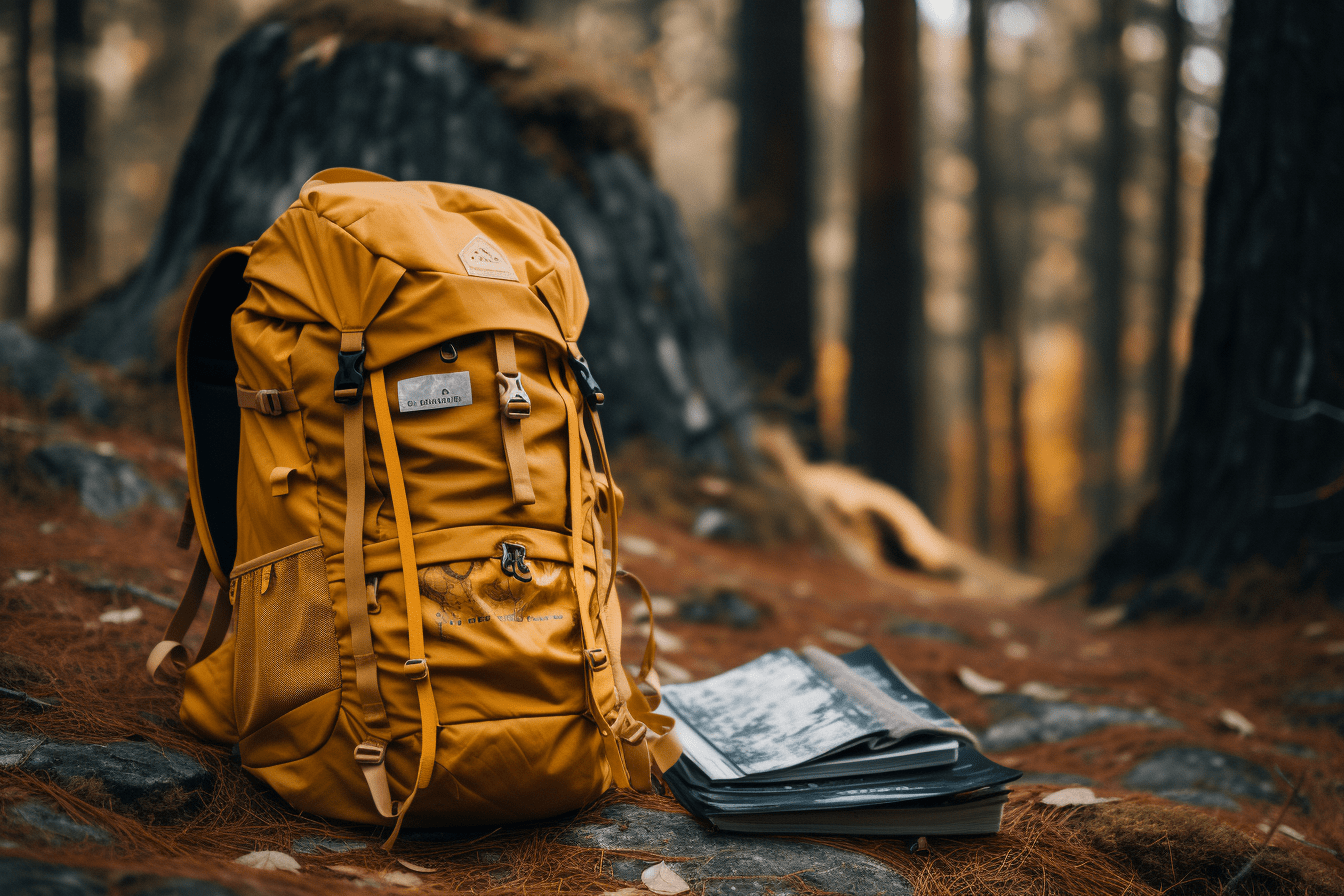Disclosure: This content may contain affiliate links. Read my disclosure policy.
The 10 Essentials is a list of items you should carry on every trip into the backcountry. This essential gear can keep you safe and on track. In an emergency, it might save your life.
You may not need these items on every trip but, if you only ever need them on one trip, you’ll be so relieved you packed them.
The list is intended to help in two potential scenarios…
- In case of an accident or emergency
- In case you need to spend a night outside
The original “Ten Essentials” list was developed in the 1930’s by mountaineers. Back then it was conceived as a list of specific items. But recently the list has been updated. These days, it takes a systems approach, with broad categories of items which you fill out according to your own preferences.
Not every trip needs every single piece of gear you own. But this list of ten essential systems will help you consider what you need for each trip.
The 10 Essentials
Navigation
Your everyday hiking kit should have at least two forms of navigation: your phone with a GPS app and, for backup, a map and compass. Yeah, really. As in: really, really, truly, both of these!
Some people also pack a printout of the specific hike they’ve planned.
New York New Jersey Trail Conference Maps
The absolute best way to navigate the Catskill Park is with the 13th Edition of the NYNJ Trail Conference maps, updated and published in 2023.
The National Geographic also produce a high quality map of the Park — but every Catskill mountain nerd I know uses the NYNJTC maps, which are designed and developed by the same people who design and develop the trails themselves. Essentially, the NYNJTC maps are impossible to beat.
Avenza
The NYNJTC maps are also available for smartphones as a single-sheet GPS-enabled map for Avenza. This is an in-app purchase. So you download the app, then buy the map. Absolutely worth it. When you’re inside the map area, a blue dot appears at your location, overlaid on the contour lines and trail markings. You can always see exactly where you are. You can even see which way you’re facing. This is how to do it.
GaiaGPS
The other app I use every single time is Gaia GPS. I use it to record and store my “tracks”, but it’s also an excellent navigation tool. I used it in the Adirondacks this year, on the Dix range, and for that trip it was my primary means of navigation — with NatGeo paper maps and a compass for back-up.
AllTrails
People also like All Trails. AllTrails feels a little like the Facebook of hiking. I use it mostly of social reasons. As a crowd-sourced app, its trail descriptions are not always accurate, and it can encourage some people to venture into the mountains with a false sense of safety. But if you like it, and it works for you, hike in peace — just make sure you’ve researched your route deeply, plan ahead, and stay safe.
Phones vs Map/Compass
GPS-enabled phones have revolutionized hiking. The old school folks are a bit snooty about it, but there’s no question our phones and apps are amazing navigation tools.
- In areas of spotty or low/no cell coverage, your phone will try extra hard to connect with a cell tower, which can drain your battery pretty quickly. To conserve your battery for when you need it, at the start of every hike put your phone in Airplane Mode. Your phone does NOT need cell service to navigate by GPS. See below.
- In the winter, or when I’m camping overnight, I pack a cheap power brick in case I need to recharge my phone.
- In severe cold, carry any extra batteries on your body (i.e. inside your jacket, close to your chest) so they stay warm. Severe cold is brutal on battery life.
It’s important to know…
If your phone has GPS functions, you don’t need cell coverage to use them. Your phone’s GPS functions work independently of cell coverage. You can locate yourself, orient yourself, and record your hike route — all without cell service. This is a crucial safety feature.
Before venturing out, you should confirm this is true for your phone. Put your phone in Airplane Mode and test a few GPS apps.
Map & Compass FTW
The fear of technology “suddenly not working” is odd to me. But you might drop your phone and smash the screen, or it might fall in a brook and die, or your battery might simply drain suddenly. These things can happen.
In which case, it’s super important to know how to use a compass. You need to be comfortable identifying the terrain around you — ridges, furrows, streams — and orienting yourself correctly using a paper map. It’s not as hard as it looks. YouTube is full of tutorials. These are life skills we all should have.
Learn how to use your compass with the correct declination. Extra points if you learn how to set and follow a bearing. Again, YouTube has lots of great tutorials. This is also something a Licensed Guide can help you learn on a guided hike.
- Short bushwhack mountains like Rusk and Halcott are good places to practice your map/compass skills.

Light Sources
You absolutely need a headlamp. Your phone’s light is not enough.
Specifically, get a modern LED headlamp. Headlamps are preferable to flashlights because flashlights have to be held in your hand, which limits you. On uneven terrain, you want both hands free for balance or grip, or for your hiking poles. With a headlamp, your hands are always free.
There are lots of good options online. People seem to like the Petzl Tikka headlamp which I carry on every hike. I like it a lot. I also have a cheap spare Foxelli headlamp from Amazon.
Headlamps are now so cheap you can buy two: one for you to use, plus a spare for back-up, or in case a companion doesn’t have one. Always carry extra AAA batteries.
- I do also have a small LED flashlight stashed in my backpack. It has bright, medium, dim, and flashing modes, which might be useful in an emergency.
Protection from the Elements
Shades for your eyes are good all year round.
During the brighter months add sunscreen and SPF clothing.
In colder weather, you’ll need a hat and a scarf — or a buff.
The folks in the ADK Winter Mountaineering School have a saying for winter hikes: “Gloves are optional. Mittens are mandatory.” When it gets into the low twenties and colder (below -5°C), you’ll definitely want mittens. Mittens keep your fingers together, multiplying warmth.
You’ll also be thinking about layers so you can modulate your core temperature as you warm up and cool down. The basic components are a thin wicking base layer, a warm mid layer, and then a soft-shell or hard-shell outer layer, depending on the weather.
Cotton Kills
The one fabric you should absolutely avoid is cotton. This includes regular jeans, and any denim on any part of your body. Cotton kills because it holds water — the one thing you never want sitting near your skin. In the backcountry, hypothermia is a fundamental concern. It happens quickly. A slip in a brook, or a sudden downpour, could mean real trouble.
Your entire hiking wardrobe should be made of synthetics and wool. These materials drain water and dry quickly. A good synthetic base layer, in particular, will wick moisture away from your skin.
Clothing is a huge topic. Your personal research and preferences will play into your choices. Trial-and-error your way to whatever works best for you.
First Aid
Basic supplies like band-aids, blister repair, alcohol swabs, and a few pain-relief pills.
I like this lemon/eucalyptus insect repellant which is all-natural.
And this tick twister works great.
Amazon is full of pre-packaged outdoor first-aid kits, or you can just chuck some commonsense supplies in a Ziploc bag.

Knife/Repair/Emergency
I carry a small knife. So far, I’ve only used it to harvest mushrooms. I also have a small Swiss Army Knife stashed in my backpack.
For repairs, I carry a length of 550lb paracord which is super light, a few zip ties (helpful if a lace snaps), and some duct tape wrapped around a piece of card.
In case of a real emergency, I carry a plastic whistle which I wear around my neck. It’s bigger and much louder than the kind you find built into backpacks and multi-tools. I feel like this might be one of my best investments. The idea is that you can yell for help for only a few minutes before your throat gives out — but a whistle is easy to keep blasting, and can be heard for miles. Get a plastic one because, in winter, metal will freeze to your lips.
- The correct emergency distress signal is three short blasts together, repeated every minute.
- In fact, three of anything signals distress: three rocks in a triangle, three flashes of a light, three blasts of a loud noise — repeating every minute until you see or hear three signals in response.
Heat Supplies
I have a small metal fire starter but I also pack a basic disposable lighter. Who wants to futz with a fire starter if they don’t have to? I pack both because… I dunno, the lighter might break? A little redundancy doesn’t hurt.
More importantly, I know how to build a fire from found wood and kindling.
In the bottom of my backpack, I also keep a few space blankets and some HotHands hand warmers.
Emergency Shelter
I carry an emergency bivvy. Basically, a big tough waterproof bag. Doubt I’ll ever need to use it but, man, would it suck to not have it if I needed it. Potentially life-saving.
Extra Food
I tend to overpack my food. I bring too many calories. I’m trying to chill. But I always have some emergency supplies stashed in my pack. You want high caloric density foods that won’t go bad — protein bars, Snickers, Reese’s Pieces, nuts, etc.
Extra Water
Apart from my Osprey 2.5L water reservoir — and maybe a frozen Gatorade or two in the summer — I carry a LifeStraw and some water purification tabs. Both are super light, so I don’t even feel the extra weight.
Extra Clothes
I lost a mitten on a mountain one time. Duh. It happens. A small spare set of wool gloves would have been nice. And a spare hat doesn’t take up much space, either. Losing a hat in winter could mean disaster.
A second pair of socks is a common recommendation, in case your feet get wet; pack ’em in plastic.
Finally, my rain shell scrunches down into a small pouch which stays in my backpack until I need it.
Read More
- Start to develop your personal basic hiking kit.
- Read this step-by-step guide to learn how to use a compass.
- Read Winter Hiking Essentials and grab this Free Winter Checklist — a handy PDF download with everything you need in one place.
- Also, make sure to bone up on how to not die in the Catskills.
- I gave an Instagram Live talk on the 9 Differences Between Hiking the Catskills and the Adirondacks. It’s a pretty tight 20 minute watch.
Get full access…
Get instant access to the full version of this site and enjoy great supporter benefits: full galleries, full trail notes, early access to the latest content, and more.
Hot on the website right now…
Follow for more…
Follow my @TotalCatskills content on Instagram for regular hiking inspo and safe, inclusive community.

